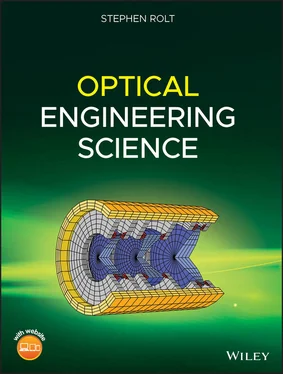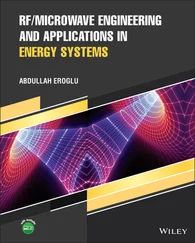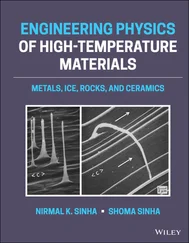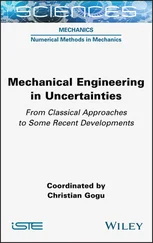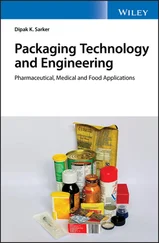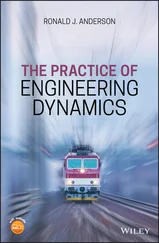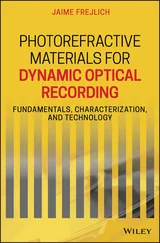1 Cover
2 Preface
3 Glossary
4 About the Companion Website
5 1 Geometrical Optics1.1 Geometrical Optics – Ray and Wave Optics 1.2 Fermat's Principle and the Eikonal Equation 1.3 Sequential Geometrical Optics – A Generalised Description 1.4 Behaviour of Simple Optical Components and Surfaces 1.5 Paraxial Approximation and Gaussian Optics 1.6 Matrix Ray Tracing Further Reading
6 2 Apertures Stops and Simple Instruments2.1 Function of Apertures and Stops 2.2 Aperture Stops, Chief, and Marginal Rays 2.3 Entrance Pupil and Exit Pupil 2.4 Telecentricity 2.5 Vignetting 2.6 Field Stops and Other Stops 2.7 Tangential and Sagittal Ray Fans 2.8 Two Dimensional Ray Fans and Anamorphic Optics 2.9 Optical Invariant and Lagrange Invariant 2.10 Eccentricity Variable 2.11 Image Formation in Simple Optical Systems Further Reading
7 3 Monochromatic Aberrations3.1 Introduction 3.2 Breakdown of the Paraxial Approximation and Third Order Aberrations 3.3 Aberration and Optical Path Difference 3.4 General Third Order Aberration Theory 3.5 Gauss-Seidel Aberrations 3.6 Summary of Third Order Aberrations Further Reading
8 4 Aberration Theory and Chromatic Aberration4.1 General Points 4.2 Aberration Due to a Single Refractive Surface 4.3 Reflection from a Spherical Mirror 4.4 Refraction Due to Optical Components 4.5 The Effect of Pupil Position on Element Aberration 4.6 Abbe Sine Condition 4.7 Chromatic Aberration 4.8 Hierarchy of Aberrations Further Reading
9 5 Aspheric Surfaces and Zernike Polynomials5.1 Introduction 5.2 Aspheric Surfaces 5.3 Zernike Polynomials Further Reading
10 6 Diffraction, Physical Optics, and Image Quality6.1 Introduction 6.2 The Eikonal Equation 6.3 Huygens Wavelets and the Diffraction Formulae 6.4 Diffraction in the Fraunhofer Approximation 6.5 Diffraction in an Optical System – the Airy Disc 6.6 The Impact of Aberration on System Resolution 6.7 Laser Beam Propagation 6.8 Fresnel Diffraction 6.9 Diffraction and Image Quality Further Reading
11 7 Radiometry and Photometry7.1 Introduction 7.2 Radiometry 7.3 Scattering of Light from Rough Surfaces 7.4 Scattering of Light from Smooth Surfaces 7.5 Radiometry and Object Field Illumination 7.6 Radiometric Measurements 7.7 Photometry Further Reading
12 8 Polarisation and Birefringence8.1 Introduction 8.2 Polarisation 8.3 Birefringence 8.4 Polarisation Devices 8.5 Analysis of Polarisation Components 8.6 Stress-induced Birefringence Further Reading
13 9 Optical Materials9.1 Introduction 9.2 Refractive Properties of Optical Materials 9.3 Transmission Characteristics of Materials 9.4 Thermomechanical Properties 9.5 Material Quality 9.6 Exposure to Environmental Attack 9.7 Material Processing Further Reading
14 10 Coatings and Filters10.1 Introduction 10.2 Properties of Thin Films 10.3 Filters 10.4 Design of Thin Film Filters 10.5 Thin Film Materials 10.6 Thin Film Deposition Processes Further Reading
15 11 Prisms and Dispersion Devices11.1 Introduction 11.2 Prisms 11.3 Analysis of Diffraction Gratings 11.4 Diffractive Optics 11.5 Grating Fabrication Further Reading
16 12 Lasers and Laser Applications12.1 Introduction 12.2 Stimulated Emission Schemes 12.3 Laser Cavities 12.4 Taxonomy of Lasers 12.5 List of Laser Types 12.6 Laser Applications Further Reading
17 13 Optical Fibres and Waveguides13.1 Introduction 13.2 Geometrical Description of Fibre Propagation 13.3 Waveguides and Modes 13.4 Single Mode Optical Fibres 13.5 Optical Fibre Materials 13.6 Coupling of Light into Fibres 13.7 Fibre Splicing and Connection 13.8 Fibre Splitters, Combiners, and Couplers 13.9 Polarisation and Polarisation Maintaining Fibres 13.10 Focal Ratio Degradation 13.11 Periodic Structures in Fibres 13.12 Fibre Manufacture 13.13 Fibre Applications Further Reading
18 14 Detectors14.1 Introduction 14.2 Detector Types 14.3 Noise in Detectors 14.4 Radiometry and Detectors 14.5 Array Detectors in Instrumentation Further Reading
19 15 Optical Instrumentation – Imaging Devices15.1 Introduction 15.2 The Design of Eyepieces 15.3 Microscope Objectives 15.4 Telescopes 15.5 Camera Systems Further Reading
20 16 Interferometers and Related Instruments16.1 Introduction 16.2 Background 16.3 Classical Interferometers 16.4 Calibration 16.5 Interferometry and Null Tests 16.6 Interferometry and Phase Shifting 16.7 Miscellaneous Characterisation Techniques Further Reading
21 17 Spectrometers and Related Instruments17.1 Introduction 17.2 Basic Spectrometer Designs 17.3 Time Domain Spectrometry Further Reading
22 18 Optical Design18.1 Introduction 18.2 Design Philosophy 18.3 Optical Design Tools 18.4 Non-Sequential Modelling 18.5 Afterword Further Reading
23 19 Mechanical and Thermo-Mechanical Modelling19.1 Introduction 19.2 Basic Elastic Theory 19.3 Basic Analysis of Mechanical Distortion 19.4 Basic Analysis of Thermo-Mechanical Distortion 19.5 Finite Element Analysis Further Reading
24 20 Optical Component Manufacture20.1 Introduction 20.2 Conventional Figuring of Optical Surfaces 20.3 Specialist Shaping and Polishing Techniques 20.4 Diamond Machining 20.5 Edging and Bonding 20.6 Form Error and Surface Roughness 20.7 Standards and Drawings Further Reading
25 21 System Integration and Alignment21.1 Introduction 21.2 Component Mounting 21.3 Optical Bonding 21.4 Alignment 21.5 Cleanroom Assembly Further Reading
26 22 Optical Test and Verification22.1 Introduction 22.2 Facilities 22.3 Environmental Testing 22.4 Geometrical Testing 22.5 Image Quality Testing 22.6 Radiometric Tests 22.7 Material and Component Testing Further Reading
27 Index
28 End User License Agreement
1 Chapter 4 Table 4.1 Pupil and field dependence of principal aberrations.
2 Chapter 5 Table 5.1 Form of conic surfaces. Table 5.2 First 28 Zernike polynomials. Table 5.3 Peak to valley: Root mean square (rms) ratios for different wavefront ... Table 5.4 Comparison of Zernike numbering systems.
3 Chapter 6 Table 6.1 Low order Hermite polynomials.
4 Chapter 7Table 7.1 Radiometric units.Table 7.2 Spectral radiance for typical calibrated FEL lamp.Table 7.3 Photometric quantities.Table 7.4 Typical illuminance levels for difference environments.Table 7.5 Luminous efficiencies of different sources.Table 7.6 Visual magnitudes of several astronomical objects.
5 Chapter 8Table 8.1 Some common uniaxial crystals.
6 Chapter 9Table 9.1 Sellmeier coefficients for SCHOTT BK7 ®. Table 9.2 Temperature coefficient of refractive index for some common glasses.Table 9.3 Semiconductor materials and bandgaps.Table 9.4 Transmission range for common optical materials.Table 9.5 Material thermal stability – Figures of merit.Table 9.6 Resistance of optical materials to thermal shock.
7 Chapter 10Table 10.1 List of short pass and long pass filters (SCHOTT glass). Reproduced w...Table 10.2 Wratten series of filters. Reproduced with permission of Kodak and Wr...Table 10.3 Some common thin film materials.
8 Chapter 12Table 12.1 Common gas laser types.Table 12.2 List of solid state lasers.Table 12.3 Semiconductor lasers.Table 12.4 Chemical lasers.Table 12.5 Tuning range for selected dyes.Table 12.6 ‘Other Lasers’.
9 Chapter 13Table 13.1 Description of slab modes.
10 Chapter 14Table 14.1 Some photoconductive materials.
11 Chapter 15Table 15.1 Optimised Kellner design (dimensions in mm).Table 15.2 Plössl eyepiece prescription.Table 15.3 Detector formats.Table 15.4 Cooke triplet paraxial design variables and constraints.Table 15.5 Modified Gauss prescription.
12 Chapter 18Table 18.1 Example of optical system requirements.Table 18.2 Subsystem error budget.Table 18.3 Some common surface types.Table 18.4 Lens data editor spreadsheet.Table 18.5 Merit function.Table 18.6 Optimised prescription.Table 18.7 Merit function following optimisation process.Table 18.8 Selective list of tolerancing operands in Optic Studio.Table 18.9 Portion of tolerance editor.Table 18.10 Worst offenders in tolerance sensitivity analysis.Table 18.11 (a) Tolerances for material properties, (b) Tolerances for element m...Table 18.12 Cumulative contribution to form error by Zernike order.Table 18.13 Non-sequential lens data editor (much condensed).
Читать дальше
